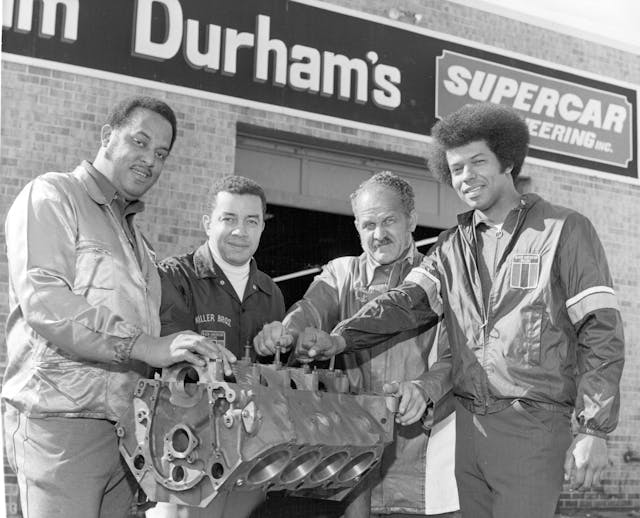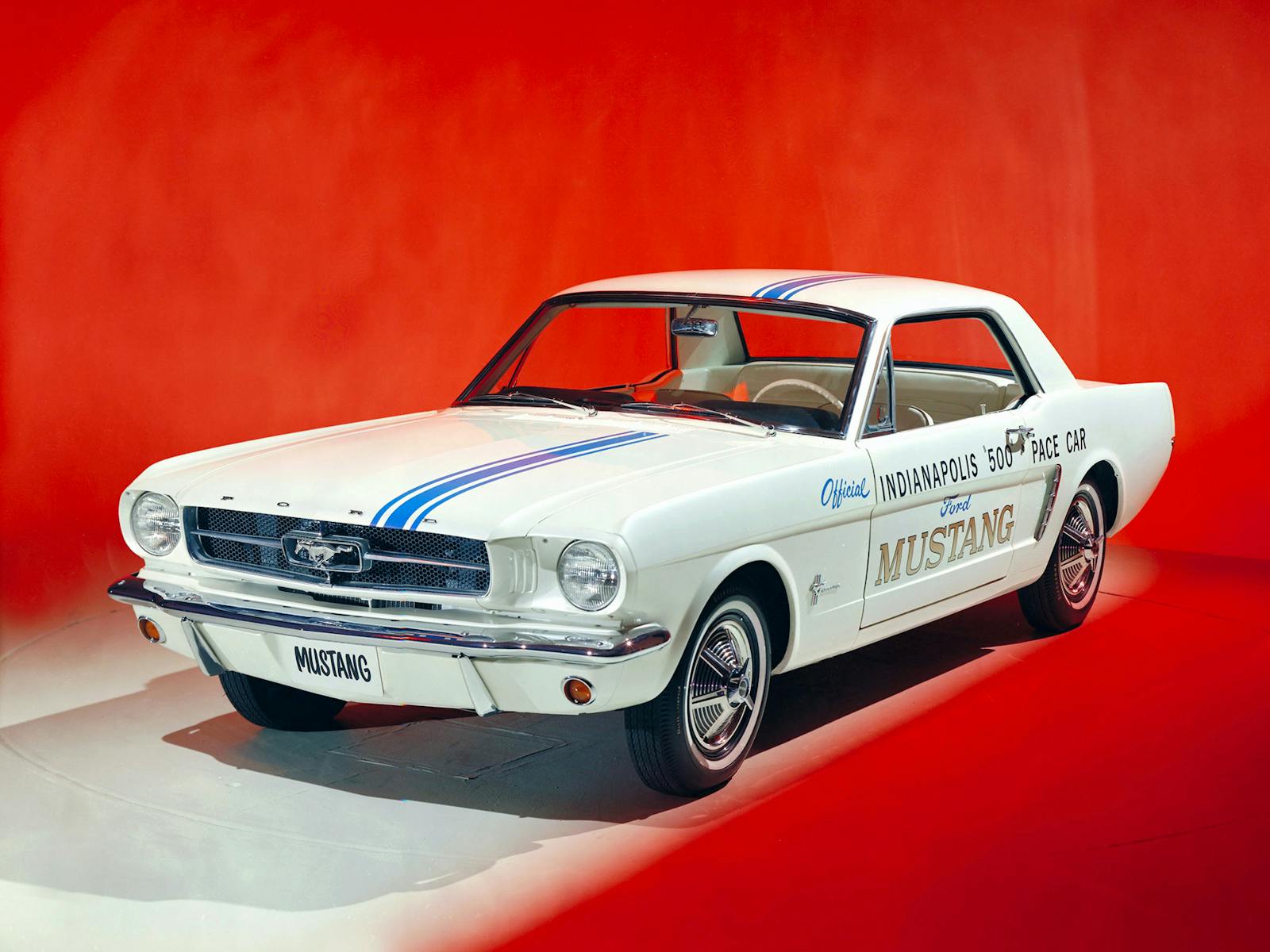Wendell Scott, NASCAR’s first Black driver, left a legacy of strength and grace
If you think you know Wendell Scott because you’ve seen Greased Lightning, think again. The onscreen racism and offensive language in the 1977 film were tame compared to what Scott, NASCAR’s first Black driver, actually experienced. Equally underplayed was his benevolence in the face of it.
“He didn’t let circumstances define who he was,” Scott’s son Franklin told the Virginia Star-Tribune in 2015. “The Bible teaches that before a person can have honor, they must first have integrity and humility … (and) Daddy was a man of great honor.”
Despite the prejudice against him, Scott refused to give up his dream—“There were two words that were forbidden for us to use growing up in the Scott household,” Franklin said. “Those words were ‘can’t’ and ‘never.’” And Scott was good at following his own advice.
“Would we rather have had a yellow-brick road? … It would have been nice not to struggle so hard,” he once told Virginia’s Richmond-Times Dispatch. “But we probably appreciate it more than if we had come up without obstacles. You can’t lean toward the negative. We don’t overlook it, but we just like to draw from the positive.”
Scott not only had the demeanor and resiliency required to succeed as a Black man in a white man’s world, he also knew how to skillfully drive a car fast, originally as a bootlegger and later as a racer—and the second opportunity never would have transpired without the experience of the first.
Wendell Oliver Scott (his first name is pronounced Wen-DELL) was born nearly a century ago, on August 29, 1921, in rural Danville, Virginia. His interest in cars was likely influenced by his father, who worked as a mechanic and driver for two well-to-do white families. Scott’s competitiveness, on the other hand, was likely innate. While growing up, he raced his old beat-up bike against white kids his age—“I was the only black boy that had a bicycle,” he said in Brian Donovan’s 2008 biography Hard Driving: The Wendell Scott Story—and he was a daredevil on roller skates, accepting whatever challenges came his way, like flying down a hill while balancing on one skate.
Scott dreamed of owning his own auto repair shop and decided the only way to do it was to drop out of high school and earn what he could as a taxi driver. He later served as a mechanic in WWII, and upon on his return he went back to driving his cab. However, after marrying Mary Coles in 1943 and starting a family, Scott increased his meager earnings by running illegal moonshine whiskey. His reputation as a driver grew to such legendary status that after Scott was finally apprehended by police in 1949 (and given three years’ probation), the same officers put forth his name when a local racing promoter wanted to put a Black driver on the Danville track to sell more tickets.
Scott crashed in that first race in 1952, but he’d been bitten by the motorsports bug. He repaired his car and returned to the track for more, but even after he was turned away, he refused to take no for an answer, doggedly pursuing his passion for speed.
“Once I found out what it was like, racing was all I wanted to do as long as I could make a decent living out of it,” Scott later said. “I’m no different from most other people who’re doing what they like to do.”
Scott was, however, treated differently. He was Black in the Jim Crow South. Time and again he became “the first Black driver to …,” a distinction that represented both an accomplishment and a curse. For instance, Scott was the first Black driver to race on the dirt tracks in the lower-level Dixie Circuit, and he was booed and taunted at every turn. It was an experience he shared with other history-making pioneers of color, and his own children were no exception.
Wendell and Mary Scott had seven kids, each of which went on to earn a college degree, but prior to that they often served as their father’s pit crew since he barely had enough money to keep his cars running, let alone hire a professional team. The experience taught the Scott children about hard work, perseverance, and racism, as well as their dad’s ability to behave with grace. No wonder Scott’s son Franklin speaks of his dad with profound respect and awe.
“It was like Picasso, like a great artist doing his work,” Franklin told National Public Radio in an interview that Story Corps turned into an animated short film. “And he was in that car—he was doing his work. And as children we didn’t have that leisure time, you know; we couldn’t go to the playground. He said to us, ‘I need you at the garage.’ I can remember him getting injured, and he’d just take axle grease and put it in the cut and keep working.”
Wendell Scott’s success on the Dixie Circuit gave him the confidence to make the jump to NASCAR, but race officials would not accept his entries until Mike Poston, a part-time track manager in Richmond, Virginia, sold him a license in 1953. It came with a stern warning. “We’ve never had any black drivers,” Scott was told, “and you’re going to be knocked around.”
“I can take it,” Scott assured Poston, and indeed he could.
Some NASCAR officials weren’t pleased with the idea of a Black driver joining the circuit, but NASCAR founder and manager Bill France made it clear that Scott deserved equal treatment. After a 1954 race in which Scott wasn’t given the same $30 stipend for gasoline as the white drivers, he asked France to remedy the situation. “You’re a NASCAR member,” France said while handing Scott $30 in cash out of his own pocket, “and as of now you will always be treated as a NASCAR member.”
France, of course, could not guarantee that Scott would receive the same fair shake off the track. Scott was in constant danger from hate groups like the KKK and even received death threats.
Franklin Scott told NPR, “Daddy said, ‘Look, if I leave in a pine box, that’s what I gotta do. But I’m gonna race.’”
In 1961, Scott moved up to NASCAR’s top-tier, the Grand National Series, and succeeded almost by sure willpower, racing second-hand cars that he bought from fellow drivers and somehow managed to keep running on a shoestring budget. Drivers Ned Jarrett and Richard Petty were among his vocal allies.
Scott’s first Grand National Series start was in the Spartanburg 200 on March 1, 1961, nearly 60 years ago. Although he finished 17th of 18 cars, Scott rallied to have a solid rookie season, leading all first-year drivers in points with five top-10 finishes in 23 starts. In a stark reminder of the prevailing attitude in the South, the Rookie of the Year award was given to Woodie Wilson, a white driver who competed in only five races and had one top-10 finish—ninth.
Scott performed even better in ’62, scoring 19 top-10 finishes, including a pair of thirds. But his greatest moment on the track came the following year on December 1, 1963, when he became “the first Black driver to” once again, this time by winning a 100-mile race at Speedway Park in Jacksonville, Florida. Of course, Scott’s historic achievement came with a few bumps.
Scott, then 51, was certain he’d won the race, but the checkered flag wasn’t waved until Buck Baker crossed the finish line two laps later. While Baker celebrated in pit row, posed for photos, kissed a beauty queen, received a trophy, and was handed a $1000 check, Scott sought out the race officials. Laps were counted manually back then—with pencil and paper—and he asked them to double check their numbers.
After a wait of nearly two hours, Scott was awarded the victory and the money, but he missed out on the celebration, was never interviewed by reporters, and never received the official trophy. It was never seen again, in fact. NASCAR gave Scott a trophy four weeks later, but it was a flimsier, cheaper replacement that was nothing like the original, and it was awarded without fanfare.
It was Scott’s only career NASCAR victory, and he died in 1990 of spinal cancer having never received proper recognition for his ground-breaking victory.
In 2010, the Jacksonville Stock Car Racing Hall of Fame had a replica trophy made and awarded it to five grateful members of the Scott family. Eleven years later, Scott’s children are still petitioning NASCAR to hold an official ceremony prior to a race and give their father his proper due. Franklin suggested that a 10-minute salute would be “an easy fix,” but so far it hasn’t happened.
“We continue to be in communication with the Scott family,” a NASCAR spokesperson Matt Ciesluk told us this week, “but on that front there is nothing to share at this time.”
Scott made 495 career starts from March 1961 through October 1973, and in addition to his lone victory in ’63 he recorded 20 top-five finishes, 147 top 10s, and placed among the top 10 in Grand National Series points standings in four consecutive seasons, 1966–69.
Scott didn’t go out the way he had hoped, however, nor in the way it was portrayed in Greased Lightning. After he was seriously injured in a 21-car crash at Talladega in May 1973, Scott was hospitalized for weeks and missed 16 races. He returned in time for one more go around that October, a 500-mile test of endurance at Charlotte Motor Speedway. Fighting off an aching leg and back, Scott started 38th and finished 12th—an admirable performance to be sure, but certainly not the storybook ending portrayed in the movie, in which Scott (played by Richard Pryor) comes from behind to win despite running the final five laps without three lug nuts on a violently vibrating rear wheel. That’s Hollywood. (You’d be better served watching ESPN’s excellent 2011 documentary.)
“(My dad) always felt like someday he’s going to get his big break,” Franklin Scott told NPR. “But for 20 years nobody mentioned Wendell Scott. At one point it was like he never existed. But he didn’t let it drive him crazy. I think that’s what made him so great. He chose to be a race car driver, and he was going to race until he couldn’t race no more.”
Since Scott’s death in 1990, he has received numerous posthumous honors. He was inducted into the NASCAR Hall of Fame in 2015, and NASCAR now awards 12 Wendell Scott Scholarships each year to students from Historically Black Colleges and Universities and Hispanic Serving Institutions. In addition, the Wendell Scott Trailblazer award is presented to “an outstanding minority or female driver who displays exceptional on-track performance, sportsmanship, and community service.”
Wendell Scott possessed all three attributes in abundance, along with a sense of humility that rose above the ugliness of racism as he integrated and proved his mettle in an all-white sport. “When it’s too tough for everybody else,” he often said, “it’s just right for me.”


